
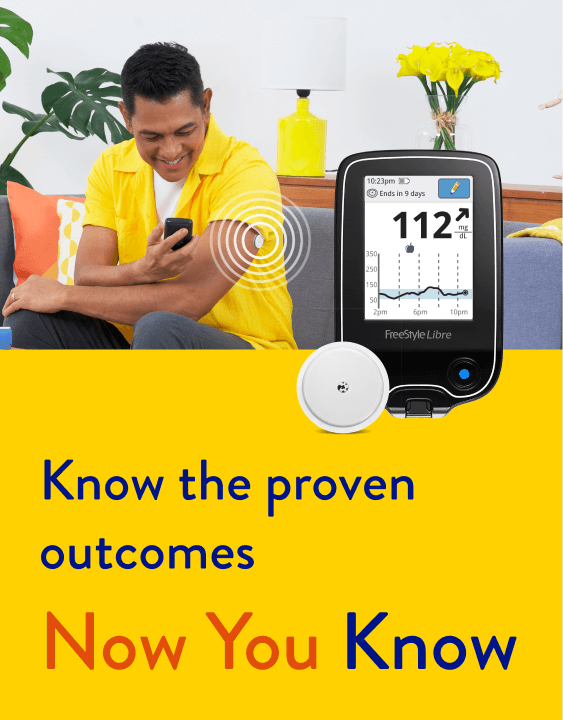
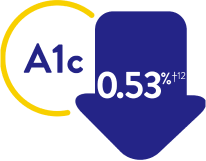
After 12-16 weeks
†In adults with T1D using FreeStyle Libre (p<0.0001 vs. baseline)12
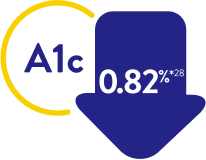
After 10 weeks
*In people with T2D on multiple daily injections of insulin and FreeStyle Libre (p=0.005 vs. standard blood glucose monitoring)28
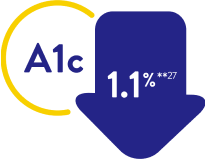
After 22 weeks
**In people with T2D who were using basal insulin and FreeStyle Libre (p<0.001 vs. baseline A1c)27
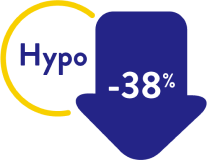
After 6 months
less time spent in hypo in people with T1D
(p=0.0001 vs. standard blood glucose monitoring)6
A 6-month RCT in 328 well-controlled T1D patients (with baseline A1c ≤7.5%) proves the FreeStyle Libre system safely and successfully replaces SMBG.6
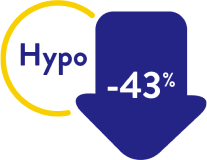
After 6 months
less time spent in hypo in people with T2D
(p=0.0006 vs. standard blood glucose monitoring)17
A 6-month RCT in 224 T2D patients on intensive insulin therapy proves the FreeStyle Libre system safely and successfully replaces SMBG.17
Abbreviations: A1c: glycated haemoglobin; hypo: hypoglycemic event; RCT: randomised controlled trial; SMBG: self-monitoring of blood glucose; T1D: type 1 diabetes; T2D: type 2 diabetes.
References: 6. Bolinder J, et al. Lancet. 2016;388(10057):2254-2263. 10. Charleer S, et al. Diabetes Care 2020;43(2):389-397. 12. Evans M, et al. Diabetes Ther 2022. https://doi.org/10.1007/s13300-022-01253-9. 13. Fokkert M, et al. BMJ Open Diab Res Care 2019;7(1):e000809. 17. Haak T, et al. Diabetes Therapy 2017;8:55-73. 27. Wright E, et al. Diabetes Spectrum. 2021;34(2):184–189. 28. Yaron, M. Diabetes Care 2019;42(7):1178–1184.
Links which take you out of Abbott worldwide websites are not under the control of Abbott, and Abbott is not responsible for the contents of any such site or any further links from such site. Abbott is providing these links to you only as a convenience, and the inclusion of any link does not imply endorsement of the linked site by Abbott.
The website that you have requested also may not be optimized for your screen size.
Do you wish to continue and exit this website?
Stay connected